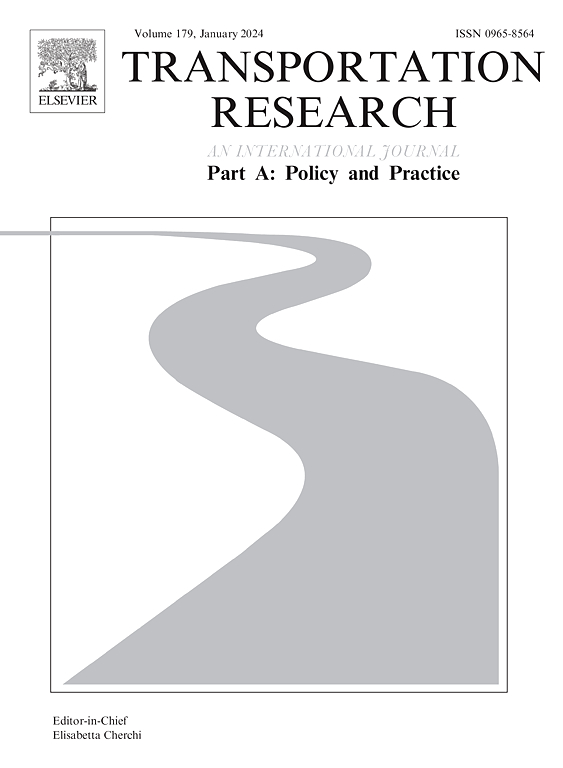Is mobility transition driven by wealth inequality? Evidence from analysis of the electric two-wheelers adoption in India
IF 6.3
1区 工程技术
Q1 ECONOMICS
Transportation Research Part A-Policy and Practice
Pub Date : 2025-02-13
DOI:10.1016/j.tra.2025.104407
引用次数: 0
Abstract
Electric Vehicles (EVs) adoption is considered a key strategy for the transition to green mobility worldwide. However, there is wide global heterogeneity in the EV adoption rates among various countries. The manifestation of wealth inequality in the proliferation of EVs is an area of immense importance for policymakers interested in calibrating EV incentives by socio-economic characteristics. Since the predominant mode of personal transport is not the same in all countries, only a particular category of EVs can be studied to probe the impact of wealth inequality. India, due to its economy and population size, along with the sub-national level of wealth inequality, is suitable for a study on the relationship of EV adoption with wealth inequality. Two-wheelers dominate the Indian vehicular spectrum, and the sale of electric two-wheelers in India has picked up in the last five years. This study explores the impact of wealth inequality on electric two-wheeler sales in India. We use Instrumental Variable Quantile Regression (IVQR) and smooth IVQR method on the district-level data for India. Issues of endogeneity and heterogenous treatment effect are addressed through instrumental variable and quantile regression approaches, respectively. This study finds that wealth inequality is not only correlated with EV adoption, but also, the association is more pronounced in high EV adoption districts. These findings have serious policy repercussions because inequality-driven mobility transition can bring forth long-term undesirable outcomes for both economic growth and sustainability. Though the findings of this study are in the context of the Indian EV market, the inferences drawn are of global application due to increasing emphasis on EV adoption all over the world, which mostly overlooks the wealth distribution at the sub-national level.
求助全文
约1分钟内获得全文
求助全文
来源期刊
CiteScore
13.20
自引率
7.80%
发文量
257
审稿时长
9.8 months
期刊介绍:
Transportation Research: Part A contains papers of general interest in all passenger and freight transportation modes: policy analysis, formulation and evaluation; planning; interaction with the political, socioeconomic and physical environment; design, management and evaluation of transportation systems. Topics are approached from any discipline or perspective: economics, engineering, sociology, psychology, etc. Case studies, survey and expository papers are included, as are articles which contribute to unification of the field, or to an understanding of the comparative aspects of different systems. Papers which assess the scope for technological innovation within a social or political framework are also published. The journal is international, and places equal emphasis on the problems of industrialized and non-industrialized regions.
Part A''s aims and scope are complementary to Transportation Research Part B: Methodological, Part C: Emerging Technologies and Part D: Transport and Environment. Part E: Logistics and Transportation Review. Part F: Traffic Psychology and Behaviour. The complete set forms the most cohesive and comprehensive reference of current research in transportation science.

 求助内容:
求助内容: 应助结果提醒方式:
应助结果提醒方式:


